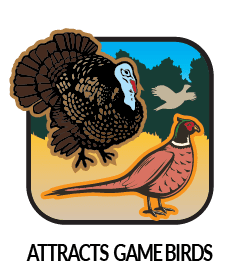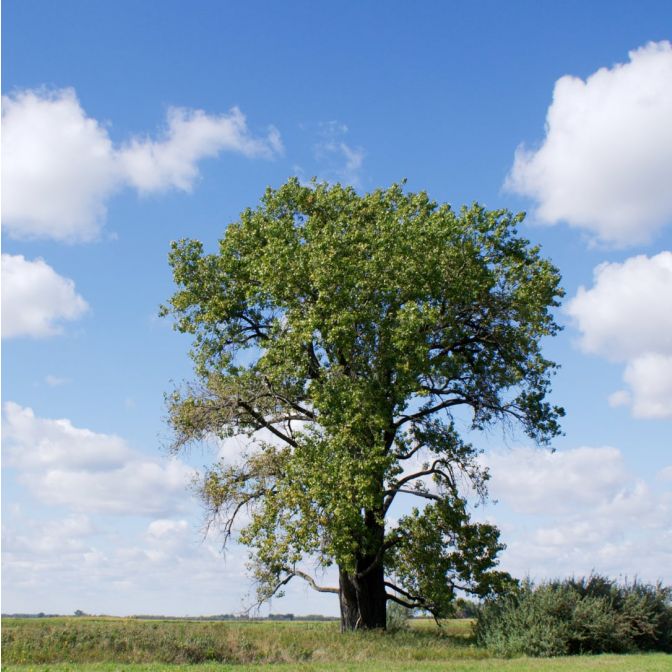Eastern Cottonwood
Plant Type: Dormant, bare-root
Zones: 2-9
Soil Type: Loamy & Sandy Soils
Site Selection: Full Sun
Mature Height & Width: 75-100' Height and 50-75' Spread
Growth Rate: Fast - 12-24" or more per year on average
Moisture Requirements: Average to wet soils





Eastern Cottonwood
Populus deltoides
If you want to achieve quick shade in a large open space, Eastern Cottonwood is a fine choice. This giant may grow 24+" annually, once established. Well suited along streams, riverbanks, swamps and in lowland, rain gardens and rural areas. This tree is also an excellent specimen for erosion control, as seen on strip mine spoils. Birds of prey enjoy for nesting and night roosts. Deer, rabbits, beavers, other small mammals, and domestic stock will browse seedlings and young trees. Beavers use Eastern Cottonwood in the construction of dams. While tolerant of drought and air pollution, it is best to plant this tree on sites away from buildings due to the extensive root system.
Common uses for Eastern Cottonwood include:
- Used in wet areas like floodplains
- Large shade tree
- Fast growing
- Good wildlife value
Birds of prey enjoy for nesting and night roosts. Deer, rabbits, beavers, other small mammals, and domestic stock will browse seedlings and young trees. Beavers use Eastern Cottonwood in the construction of dams.
Product Questions
1. What is the ideal pH for these trees?
2. Are these trees good for erosion control along stream banks?
3. What is a good tree spacing?
4. At what age will these trees be able to tolerate a prescribed burn?
5. How resistant to disease is this tree?
6. What is the drought tolerance of this tree?
7. What is the lifespan of these trees?
1. What is the ideal pH for these trees? 4.5-8
2. Are these trees good for erosion control along stream banks? Yes
3. What is a good tree spacing? Spacing should be based on mature width of tree about 50-75'. You can space closer and the trees will intertwine when they are older
4. At what age will these trees be able to tolerate a prescribed burn? unsure
5. How resistant to disease is this tree? see website factsheet noted above
6. What is the drought tolerance of this tree? relatively tolerant
7. What is the lifespan of these trees? Short lived less than 80 years





